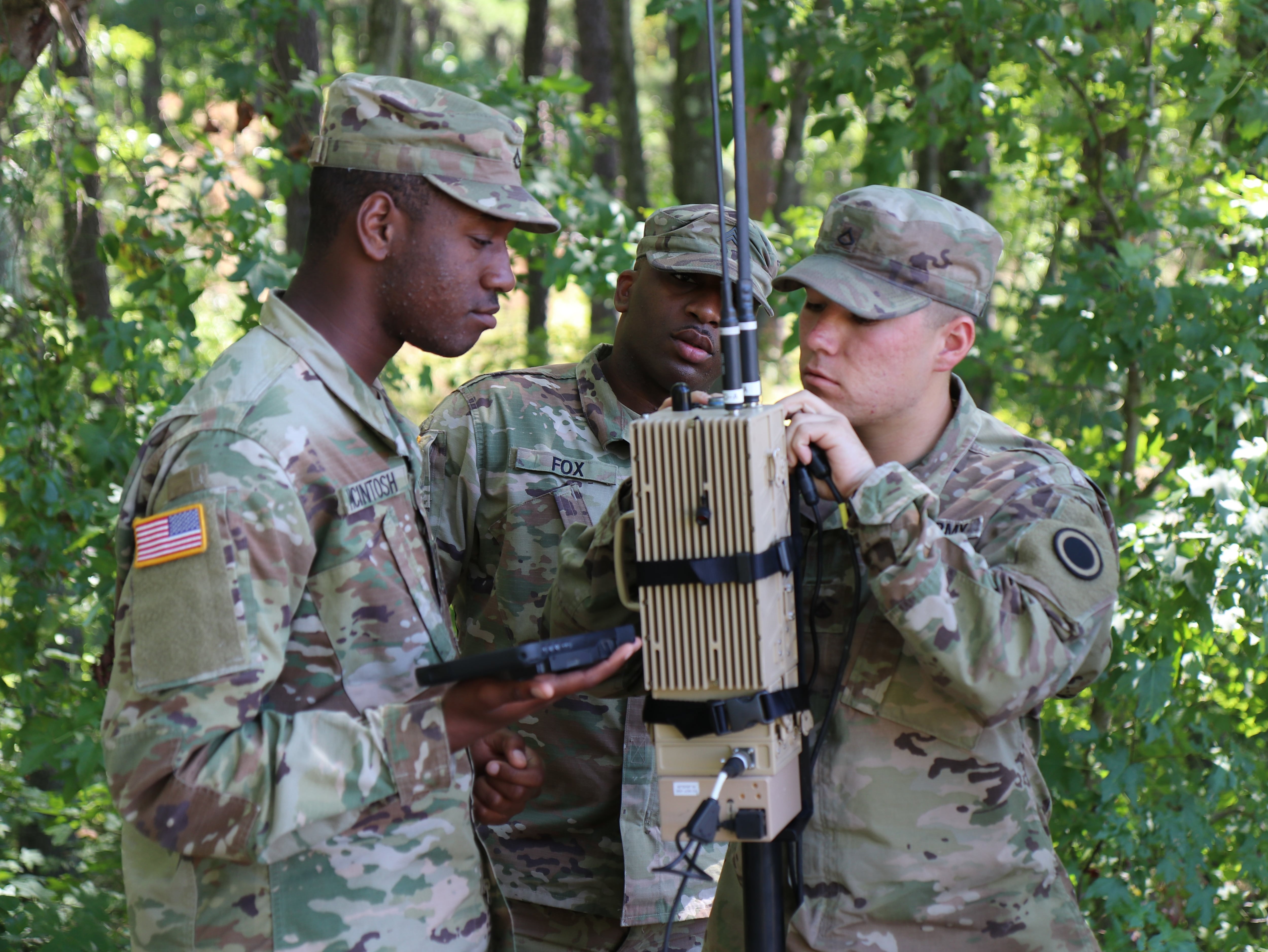Update: This article was updated to accurately reflect the use of the terms emission control and electromagnetic warfare.
Future Army ground unit commanders will have nearly instant, possibly deadly, feedback on whether they followed the right steps or if they revealed themselves on the electronic battlefield.
That’s the message the commandant of the Army’s Cyber School has for current and incoming maneuver unit leaders.
“If you remember nothing else, remember 8 minutes,” said Brig. Gen. Brian Vile at the recent Maneuver Warfighter Conference at Fort Moore, Georgia.
“What is 8 minutes? After you break squelch on your radio, you’re going to learn two things in 8 minutes — how good was your [emission control] and how good are your adversary’s [electromagnetic warfare] soldiers.”
“If your EMCON wasn’t good and your adversaries were, you’re going to get incoming,” he said.
And cyber and electronic warfare is coming to the Maneuver Center of Excellence as soon as next year. Maj. Gen. Curtis Buzzard told the conference audience that the center will embed a cyber officer to show new leaders their radio frequency, electronic spectrum “heat maps” while operating in the field and incorporate that into their mission planning as routinely as a communications plan.
“It’s going to show you what you look like to the adversary,” Vile said.
Electromagnetic warfare, or EW, training will be part of the officer basic, officer advanced and Ranger course within the next six months, he said.
By 2030, Vile said, all centers of excellence will have incorporated cyber and EW into their curriculum.
“If you don’t have skilled, trained EW warriors, you’re going to learn the way the Russians did because you’re going to conduct fratricide,” Vile said.
While that applies to radio communications it also applies to all the things commanders probably are not thinking about.
Vile listed common hazards — improperly grounded generators, any equipment with video feeds, wireless-capable printers, any device that requires external, wireless controls — all of which and more will be detected by capable enemy EW soldiers on the modern battlefield.
In one example, Vile said opposition forces strapped a mobile phone on a drone and flew it over an adversary encampment during training, it pinged multiple devices, identifying not only the phone but what mobile carrier it was using.
At the same time, Vile said, the offensive capabilities are also on the Army’s side. The electromagnetic spectrum analysis that EW and cyber soldiers provide will help spot where aerial defenses, radars and other electronic assets are located.
The center trains soldiers down to platoon level to exploit the spectrum in the field. This can give even company and battalion commanders a clearer picture of what’s happening in the otherwise invisible, but dangerous realm.
It also gives them ways to deceive adversaries by presenting signals that look like larger formations or units that aren’t there in the real world, otherwise known as “tactical deception,” Vile said.
Todd South has written about crime, courts, government and the military for multiple publications since 2004 and was named a 2014 Pulitzer finalist for a co-written project on witness intimidation. Todd is a Marine veteran of the Iraq War.





